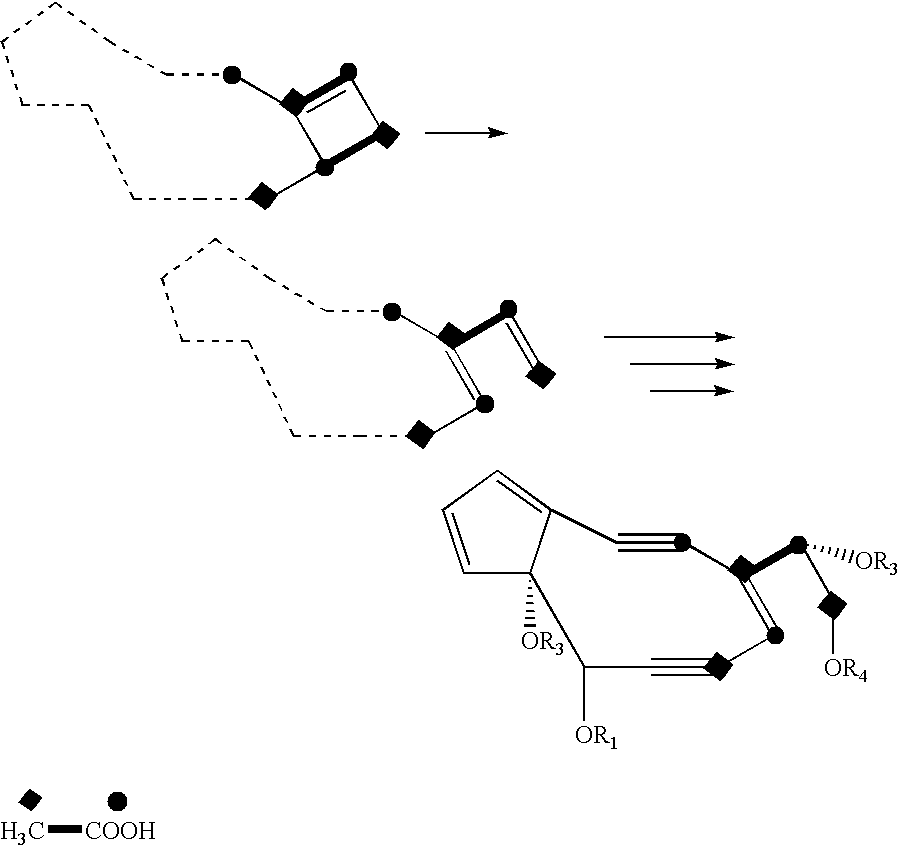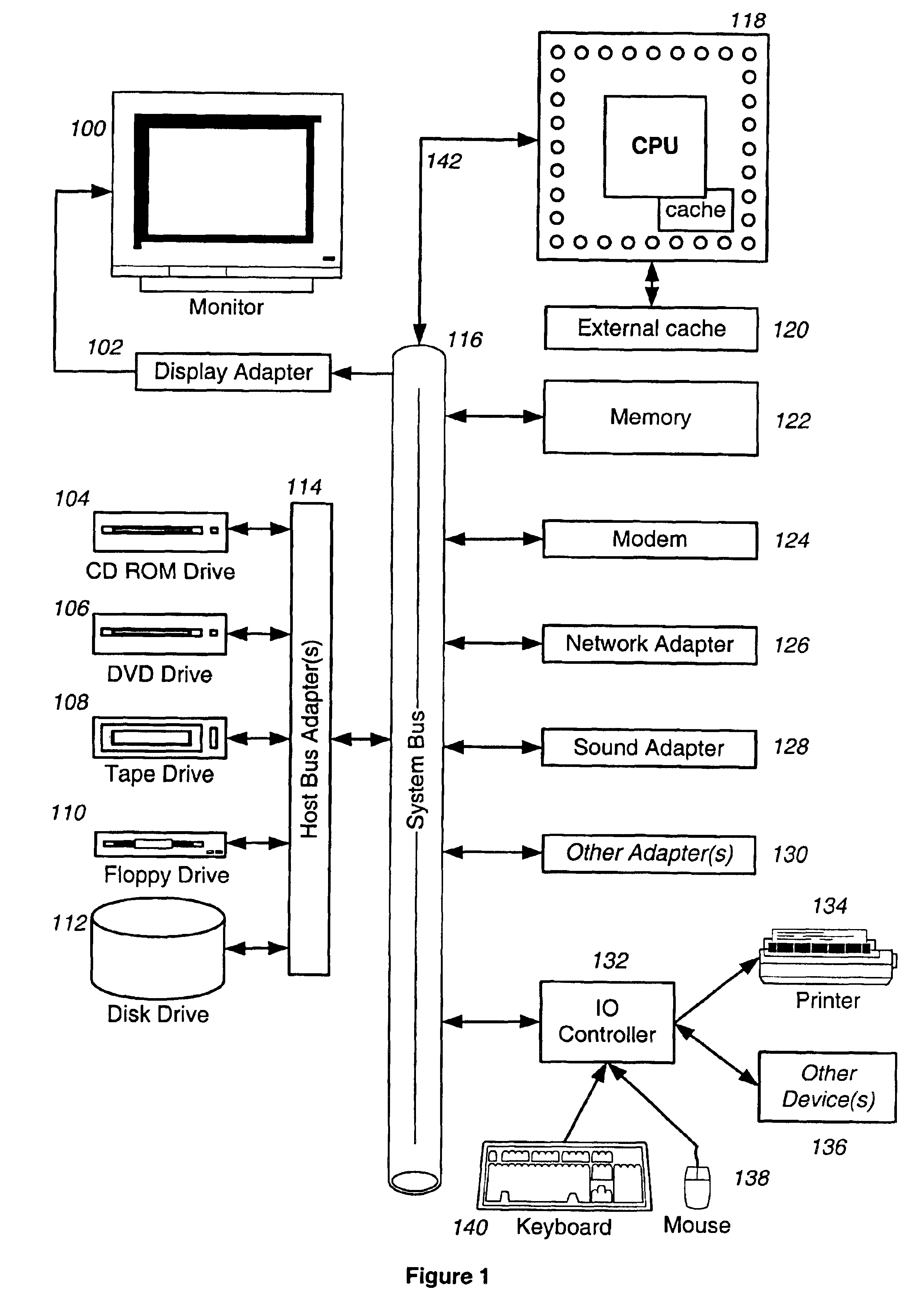Genes and proteins involved in the biosynthesis of enediyne ring structures
a technology of eniyne and ring structure, applied in the field of microorganisms, can solve the problems of insufficient discrimination, laborious screening methods, and inability to identify eniyne-producing microorganisms, and achieve the effect of high stringency and low stringency
- Summary
- Abstract
- Description
- Claims
- Application Information
AI Technical Summary
Benefits of technology
Problems solved by technology
Method used
Image
Examples
example 1
Identification and Sequencing of the Macromomycin (Auromomycin) Biosynthetic Locus
[0191]Macromomycin is a chromoprotein enediyne produced by Streptomyces macromyceticus (NRRL B-5335) Macromomycin is believed to be a derivative of a larger chromoprotein enediyne compound referred to as auromomycin (Vandre and Montgomery (1982) Biochemistry Vol 21 pp. 3343-3352, Yamashita et al. (1979) J. Antibiot. Vol. 32 pp. 330-339). Thus, throughout the specification, reference to macromomycin is intended to encompass the molecules referred to by some authors as auromomycin. Likewise, reference to the biosynthetic locus for macromomycin is intended to encompass the biosynthetic locus that directs the synthesis of the molecules some authors have referred to as macromomycin and auromomycin.
[0192]Streptomyces macromyceticus (NRRL B-5335) was obtained from the Agricultural Research Service collection (National Center for Agricultural Utilization Research, 1815 N. University Street, Peoria, Ill. 61604)...
example 2
Identification and Sequencing of the Calicheamicin Biosynthetic Locus
[0206]Calicheamicin is a non-chromoprotein enediyne produced by Micromonospora echinospora subsp. calichensis NRRL 15839. Both GSL and CIL genomic DNA libraries of M. echinospora genomic DNA were prepared as described in Example 1. A total of 288 GSL clones were sequenced with the forward primer and analyzed by sequence comparison using the Blast algorithm (Altschul et al., supra) to identify those clones that contained inserts related to the macromomycin (auromomycin) biosynthetic genes, particularly the PKSE. Such GST clones were identified and were used to isolate cosmid clones from the M. echinospora CIL library. Overlapping cosmid clones were sequenced and assembled as described in Example 1. The resulting DNA sequence information was more than 125 kb in length and included the calicheamicin genes described in WO 00 / 37608. The calicheamicin biosynthetic genes disclosed in WO 00 / 37608 span only from 37140 bp to...
example 3
Identification and Sequencing of the Biosynthetic Locus for an Unknown Chromoprotein Enediyne in Streptomyces ghanaensis
[0209]The genomic sampling method described in Example 1 was applied to genomic DNA from Streptomyces ghanaensis NRRL B-12104. S. ghanaensis has not previously been described to produce enediyne compounds. Both GSL and CIL genomic DNA libraries of S. ghanaensis genomic DNA were prepared as described in Example 1. A total of 435 GSL clones were sequenced with the forward primer and analyzed by sequence comparison using the Blast algorithm (Altschul et al., supra).
[0210]Surprisingly, two GSTs from S. ghanaensis were identified as encoding portions of genes in the 5-gene cassette common to both the macromomycin and calicheamicin enediyne biosynthetic loci. One of these GSTs encoded a portion of a TEBC homologue and the other encoded a portion of a UNBV homologue. These S. ghanaensis GSTs were subsequently found in a genetic locus referred to herein as 009C (FIG. 5). ...
PUM
| Property | Measurement | Unit |
|---|---|---|
| pH | aaaaa | aaaaa |
| pH | aaaaa | aaaaa |
| Tm | aaaaa | aaaaa |
Abstract
Description
Claims
Application Information
 Login to View More
Login to View More - R&D
- Intellectual Property
- Life Sciences
- Materials
- Tech Scout
- Unparalleled Data Quality
- Higher Quality Content
- 60% Fewer Hallucinations
Browse by: Latest US Patents, China's latest patents, Technical Efficacy Thesaurus, Application Domain, Technology Topic, Popular Technical Reports.
© 2025 PatSnap. All rights reserved.Legal|Privacy policy|Modern Slavery Act Transparency Statement|Sitemap|About US| Contact US: help@patsnap.com



